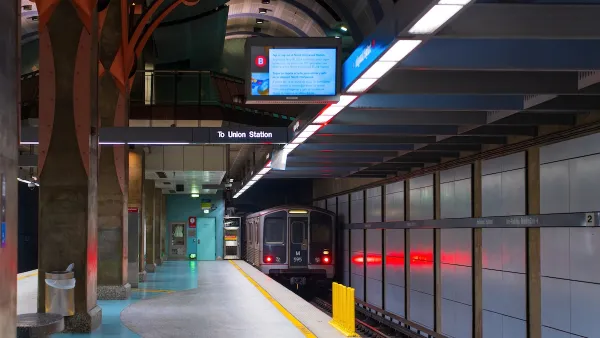Of the 20 largest metropolitan areas in the country, St. Louis had the largest percentage increase in foreign-born immigrants between 2014 and 2015.

"St. Louis notched an 8.9 percent increase in foreign-born residents from 2014 to 2015, according to data released from the U.S. Census Bureau late last week," reports Sarah Kenske. "That's larger percent increase than any of the nation's other twenty largest metro areas."
Following in second place was Minneapolis-St. Paul. Seattle, San Diego, and Houston rounded out the top five, respectively.
Fenske explains the statistical details of how St. Louis achieved the largest percentage jump in the country (also offering a caveat, of sorts):
For St. Louis, the foreign-born gains reflect an increase of about 10,623 new residents. The region as a whole is home to 2.8 million residents; just 129,559 of them are foreign-born. So while our numerical gains weren't nearly as high as many other large cities, the percentage increase shows a very real jump.
Fenske shares perspective on the effort behind the data from the St. Louis Mossaic Project, which launched in 2013 to combat sluggish immigrant growth in the region. Although the numbers are small when considered in net, their impact was significant. In 2015, the immigrant influx kept the region's population from shrinking.
FULL STORY: St. Louis Shows Biggest Gain in Foreign-Born Population of 20 Largest Metros

Maui's Vacation Rental Debate Turns Ugly
Verbal attacks, misinformation campaigns and fistfights plague a high-stakes debate to convert thousands of vacation rentals into long-term housing.

Planetizen Federal Action Tracker
A weekly monitor of how Trump’s orders and actions are impacting planners and planning in America.

In Urban Planning, AI Prompting Could be the New Design Thinking
Creativity has long been key to great urban design. What if we see AI as our new creative partner?

How Trump's HUD Budget Proposal Would Harm Homelessness Response
Experts say the change to the HUD budget would make it more difficult to identify people who are homeless and connect them with services, and to prevent homelessness.

The Vast Potential of the Right-of-Way
One writer argues that the space between two building faces is the most important element of the built environment.

Florida Seniors Face Rising Homelessness Risk
High housing costs are pushing more seniors, many of them on a fixed income, into homelessness.
Urban Design for Planners 1: Software Tools
This six-course series explores essential urban design concepts using open source software and equips planners with the tools they need to participate fully in the urban design process.
Planning for Universal Design
Learn the tools for implementing Universal Design in planning regulations.
Gallatin County Department of Planning & Community Development
Heyer Gruel & Associates PA
JM Goldson LLC
City of Camden Redevelopment Agency
City of Astoria
Transportation Research & Education Center (TREC) at Portland State University
Jefferson Parish Government
Camden Redevelopment Agency
City of Claremont




























